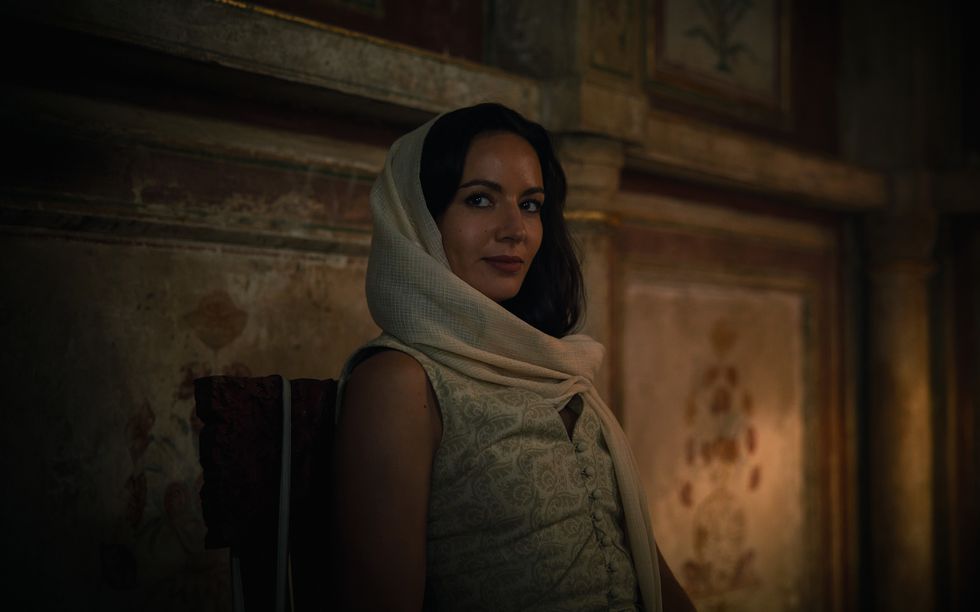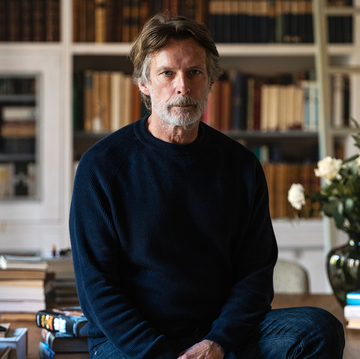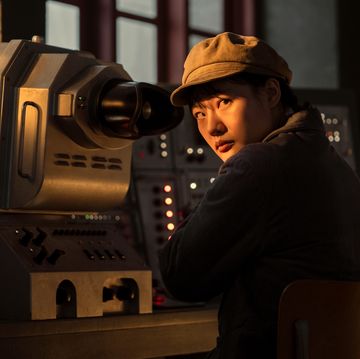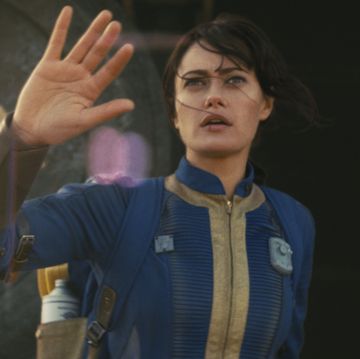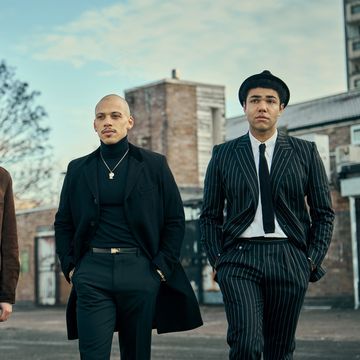It’s strange to consider what Shantaram might have been. Back in 2004, Warner Bros. bought the film rights to the literary sensation, and planned an adaptation with Johnny Depp in the lead role of Lindsay Ford. At the time, Depp was in full Jack Sparrow mode, swinging between Pirates of the Caribbean sequels and putting a bizarro spin on Wonka for Charlie and the Chocolate Factory. Depp’s Shantaram never happened. While Warner Bros. retained rights, and Australian actor Joel Edgerton was put forward for the starring role, no big-screen adaptation materialised. Finally, it became clear what Shantaram should be: a TV show. And in place of Depp, there should be Charlie Hunnam, a Geordie best known for playing a Californian motorcyclist on Sons of Anarchy. This show’s development has almost as many twists as its source material.
Will the 19-year gap between book and screen adaptation hurt Shantaram? Stalled developments don’t usually signal success, and the series, which begins streaming today on Apple TV+, has arrived long after the horse has bolted. The book may have sold over 6 million copies, but it was a commercial hit rather than a literary darling; more likely to be read on gap years than studied during the degrees that follow. Still, it was successful because it was a good story, and those are timeless. Shantaram follows Ford, an Australian convict and former heroin addict, as he escapes from prison and starts afresh in Mumbai (then Bombay) in the ‘80s, only to end up in the Indian underworld.
Even better than a good story? A true one. Author Gregory David Roberts actually lived through this, though working out where the book ends and his life begins seems to be a fool’s errand. Roberts did indeed escape from prison, where he was serving time for a series of armed robberies, which he had orchestrated to finance his heroin addiction. From there, he lived in Mumbai, working variously as a medical expert and also for the local mafia. The first episodes dutifully follow Ford’s first steps in India, with a good helping of exposition.
A story (even if it’s true) in which an Australian becomes the de facto doctor at an Indian slum is likely to receive more scrutiny now than when it was published almost 20 years ago. Shantaram is very bothered by the idea that Ford could be a white saviour and so spends a lot of time admonishing him; in one extraordinarily on-the-nose scene, Ford attempts to save a local mother only for her to die in his hands. Less clunky is the evocation of Mumbai, one of the draws of the novel. Shantaram doesn’t reveal too much about the city at first, instead isolating action to a few standalone set pieces; a sparse hotel room, a sweaty bar. As the show loosens up, and Hunnam’s role starts to breathe, we see more – within a few episodes Ford sets up shop in the same slum as his tour guide-cum-best friend Prabhu (an impish, charming Shubham Saraf) – and the show, like a traveller figuring things out, breaks free from the tourist clichés. As Ford gets caught up in everyday Mumbai life, from its bureaucracies to its criminal underworld and its endless traffic, Shantaram gains some momentum.
Of course, Shantaram lies on Hunnam’s shoulders, an actor who was almost Christian Grey in the Fifty Shades of Grey franchise (he was replaced by Jamie Dornan) and has shown a sense of naïve, misplaced heroism in The Lost City of Z. He even played a prisoner in 2017’s mostly forgotten Papillon remake. Hunnam plays this role with the straight-faced energy of the most sober guy at the pub. Everyone, and everything, around Ford is off but he is firmly on. It’s hard not to consider what kind of freewheeling energy early 2000s Depp might have lent this role (and also whether a two-hour movie framework would have helped cut the flab), but Hunnam is at least down for the ride.
Shantaram soon emerges as an audition reel for Charlie Hunnam as James Bond. There’s the Casino Royale bit where Hunnam is tied up in ropes, and beaten shirtless. There are the bedroom sequences where Hunnam, again shirtless, woos a dangerous – but more importantly, beautiful – girl. There’s the dizzying sequence in which Hunnam, this time clothed, has to perform subterfuge to rescue an American from a brothel. That latter scene, surely the most obviously Bond-like moment of espionage, is a delicate high-wire act: Hunnam, a Brit, is playing an Australian, impersonating an American. Accents notwithstanding, this is all good fun.
Of course, there are girls. There’s blonde, helpless Lisa (Elektra Kilbey) and the beautiful, unknowable Karla (Antonia Desplat). The characterisation is paper thin, though Desplat does make for a memorable lead, just about convincing us that Karla is inscrutable rather than underwritten. The role of Bond villain has unfortunately been left overlooked; Shantaram’s lack of a compelling antagonist, beyond the city’s general chaos, is fatal. There are shady dealings, stabbings, bad men and women, but none of these maintain much of a threat. Hunnam’s biggest foe is his guilty conscience. Across his time in India and in some truly terrible flashbacks which flesh out his previous crimes, the primary conflict is between Ford’s actions (progressively worse) and Ford’s moral compass (generally fine).
At 42, Hunnam has likely aged out of the Bond age bracket; the films’ producer Barbara Broccoli recently said the next actor to play the spy will be in his 30s. Besides, his blonde hair and earnestness may be too reminiscent of Daniel Craig. But it would be a shame if Shantaram is Hunnam’s last outing as a tortured hero, because, while the show’s component parts don’t quite mesh, Hunnam does at least prove himself a capable action man.
The first three episodes of ‘Shantaram’ are available to stream on Apple TV+ from 14 October. Subsequent episodes will be available on a weekly basis
Henry Wong is a senior culture writer at Esquire, working across digital and print. He covers film, television, books, and art for the magazine, and also writes profiles.

